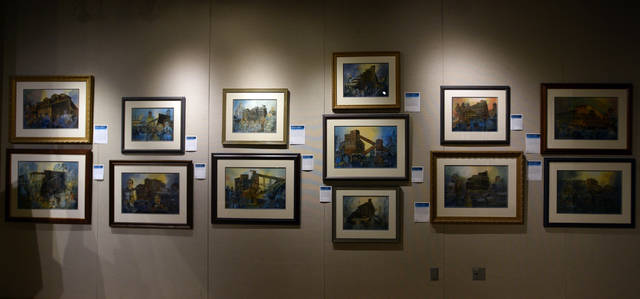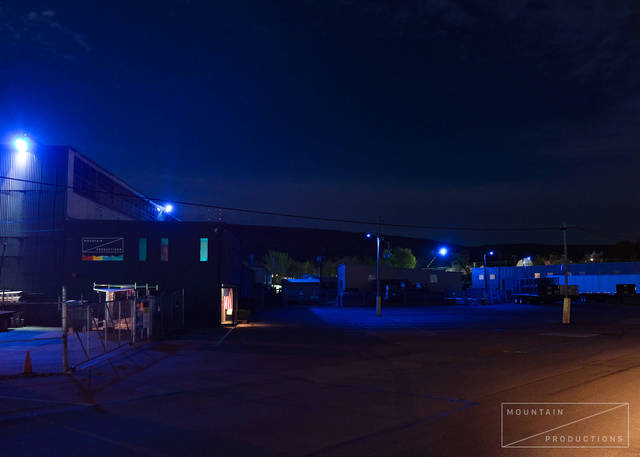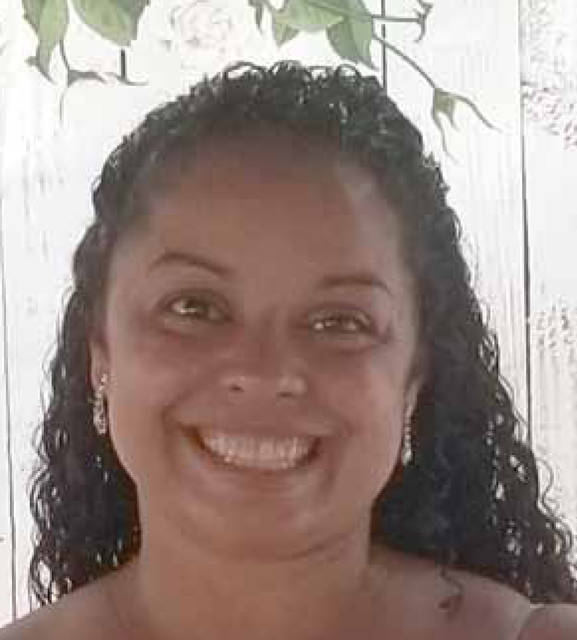WILKES-BARRE — From the Maltby in Swoyersville to the Truesdale in Nanticoke to the Gaylord in Plymouth — imposing coal breakers once towered over Pennsylvania’s coal country.
“I’ve read there were 400, but they didn’t all exist at the same time,” local artist Sue Hand said of the industrial stuctures where anthracite was broken into smaller pieces.
None of the local breakers remain standing today, but you can see what they looked like if you visit the Widmann Art Gallery at King’s College, where more than 50 acrylic paintings from a series Hand calls “Coal Breaker Communities: Faded Memories,” will be on display through Feb. 15.
While Hand gave each painting an old-time breaker as its focal point, she also gave each piece portraits of people who lived through the days when coal was king.
Here toddler boys sport sailor suits that were popular in the 1930s, enormous hair bows complement what was probably a girl’s Sunday-best dress; brides with veils and grooms with boutonnieres link arms and smile for the camera.
“I wanted to show it wasn’t all gloom and doom,” Hand said. “The miners and their families made great moments and memories.”
In one painting, a small child holds the kind of wicker basket often used to hold food.
“It was the blessing of the Easter baskets,” Hand said, explaining the youngster with the basket is one of many real people she painted, often after viewing family photos of ancestors and in-laws that her art students shared with her.
As she painted, Hand said, “I could feel the presence of their lives and energy. I don’t know if they could see what I was doing, but if they could I would like to think they’d be happy with it. I felt like I was honoring them.”
“I wanted to show young and old, rich and poor, male and female,” she added.
From the little girl holding a muff to the young mother wearing an apron to the miners with open flames flickering on top of their helmets, in some cases it’s easy to tell who was in which social class.
Hand feels a special sympathy for the breaker boys who had the dangerous, sharp-edged task of separating coal from slate and rocks with their bare hands as it moved along on a conveyor.
“I would do research and then I would cry,” Hand said. “It was the breaker boys that would get to me, God bless them.”
“I have a difficult time going into the mansions of the mine owners,” Hand said. “The one in Jim Thorpe is gorgeous. It’s beautiful. But the way I feel, I’m not sure it’s resentment but sadness at their greed. I think they could have been more generous to the miners.”
Her latest series is not the first time the artist has chosen anthracite mining heritage as a subject.
More than 200 pieces from her hexagon-shaped series, “Anthracite Miners and Their Hollowed Ground,” are on permanent display in the King’s on the Square building. The public can see them whenever the building is open.
Her recent project, “Coal Breaker Communities: Faded Memories” is on exhibit a block or so north from Wilkes-Barre’s Public Square, in the college’s Widmann Art Gallery, where the regular hours are 9 a.m. to 4:30 p.m. Mondays through Fridays.
A meet-the-artist reception will take place from 6 to 8 p.m. on Jan. 18 at the gallery, which is on the first floor of the Sheehy-Farmer Campus Center. Hand is also scheduled to discuss her recent project at 7 p.m. Jan. 17 in the Burke Auditorium, William G. McGowan School of Business. The Thursday event is King’s annual Monsignor John J. Curran Lecture.







